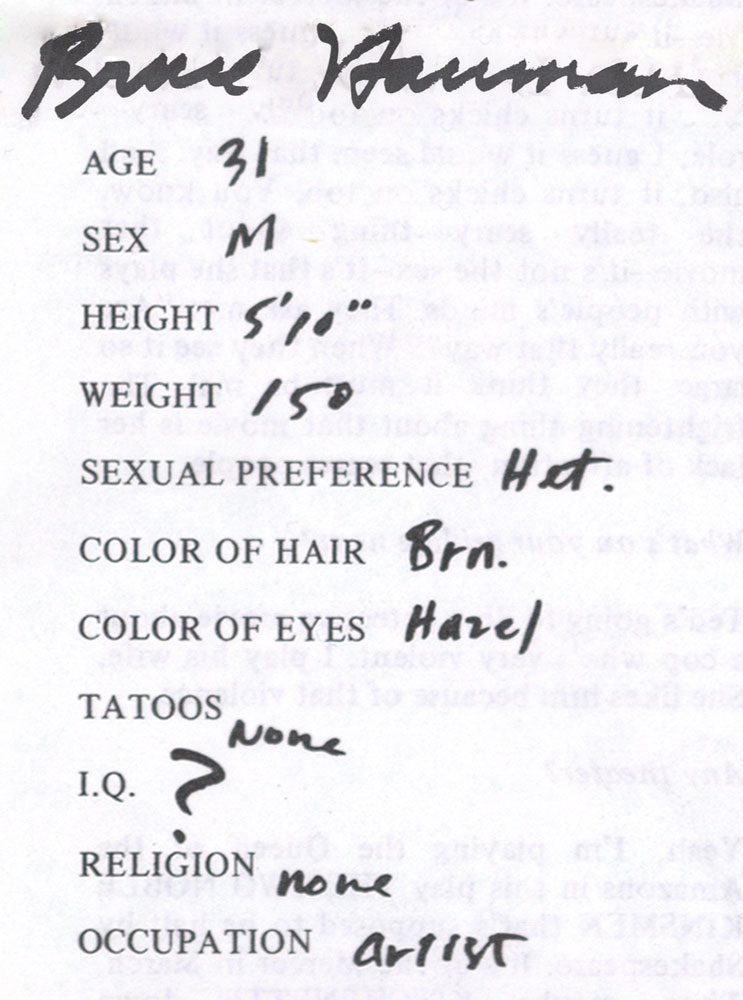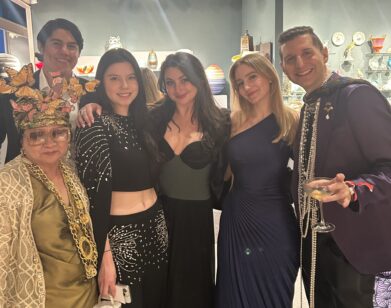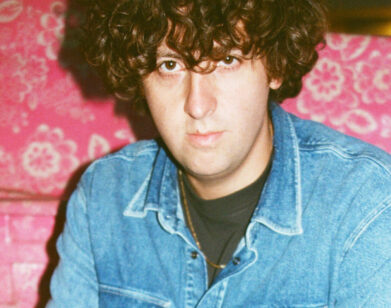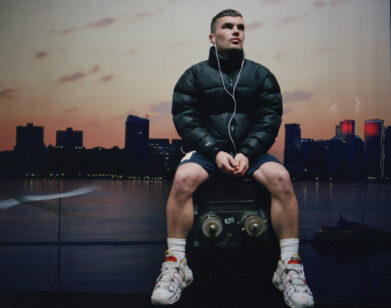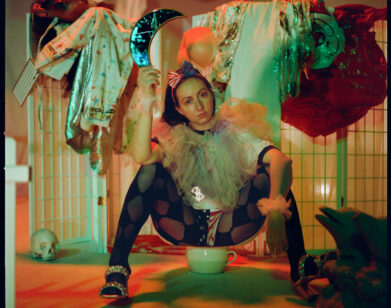New Again: Bruce Nauman
Upon entering the Arsenale portion of “All the World’s Futures,” curated by Okwui Enwezor, at this year’s Venice Biennale, visitors are greeted by a darkened room, illuminated by flashing neon sculptures and signs—the signature creations of American artist Bruce Nauman. The small survey includes text-based sculptures that date from 1972 through the 1980s and represent much of Nauman’s oeuvre. In addition to the his inclusion in the Biennale, this weekend, news broke that the 73-year-old artist will be the subject of a major retrospective and collaboration between The Museum of Modern Art in New York and Schaulager in Basel, Switzerland.
The comprehensive retrospective, spanning more than 20 years of his artistic practice, will be on display at the Schaulager in March 2018 and at the MoMA in September of the same year. His early sculptures from 1965 will be on view, as well as video, performance, large-scale installation, and photographic works.
Known for his explorations and use of themes like time, space, sound, death, and language, Nauman has been a driving force of contemporary art since he first emerged. Here we revisit at an interview from 1973, when Nauman had a retrospective at The Whitney Museum of American Art. —Saloni Gajjar
Bruce Nauman
By Ronnie Cutron
Way back in 1970 there were rumors that art was changing. The painters left Pop supposedly for the New Realism, most even left painting. Abstract Expressionism, from the ’50s, changed its name to Lyrical Abstraction and became new again. There was no main movement to latch onto anymore. Some said it was healthy…some said it was confusing. Conceptual Art denounced the concept of objects in the universe, while it absorbed them all, and helped to revive poetry. The photograph became the sacred image, and was reconsidered by the less stubborn art historians.
The idea that the source of art lies within the artist himself, and not necessarily within his produce has been around for ages but seems to have been grasped much easier by the artists in the ’70s. Whether these attitudes were designed by some political or idealistic motivations is not as important as the realization itself…that art can be alive in a person or situation, and not just hung on a wall. One of the major attitudes to emerge from the late ’60s to the ’70s is concerned with dance, presence, process, performance, and theater. Many of these areas are actually not so new, but are being handled in a new way, and blended with aspects by people who were not concerned with them before. It may go back to the pioneers of dance? Or Busby Berkeley? Or Allen Funt? Or Allen Kaprow? Or John Cage? Or Marcel Duchamp? Or Alfred Jarry? Or The Beatles? Or Oldenburg’s Store days? Or Judson Church? Or it might be totally new and original.
People like Joseph Beuys or Yvonne Rainer, Bob Morris, Gilbert & George, Bruce Nauman have been its advocates for a while now. So many new areas are now open to explore, that it is no longer necessary to cling to a movement or one area of specialization. Art seems to be more in the hands of the artist than ever. Each decade, and for that matter, each moment, gives the artist greater liberties. Bruce Nauman was one of the first to exercise these liberties in his own special way. He has experimented with nearly every media, and more important, with himself. His retrospective is now on at The Whitney Museum.
RONNIE CUTRON: How do you mark your retrospective at this point in your career? You’re very young and obviously not through working.
BRUCE NAUMAN: I’m worn out from putting it together.
CUTRON: Post-show blues?
NAUMAN: Yeah I guess so.
CUTRON: You hadn’t seen some of the pieces for a while now, right? Didn’t it give you some perspective?
NAUMAN: The pieces don’t. I don’t really relate to them anymore, but the catalog was interesting to put together.
CUTRON: Do you follow any kind of discipline?
NAUMAN: I just work when I can do something.
CUTRON: No exercises or diets?
NAUMAN: No.
CUTRON: Do you eat frankfurters?
NAUMAN: Yeah sure, sometimes. Actually, I went through a dry spell a while ago.
CUTRON: For how long?
NAUMAN: Six months…I wasn’t doing anything and I was worried. I thought I might have to give up art, but I couldn’t think of anything else to do.
CUTRON: Well, what did you do with your time then?
NAUMAN: Oh, I went to the movies and to the mountains.
CUTRON: What connects or links your work together? Is it just you or the fact that it was done by the same person?
NAUMAN: Yes, I believe that’s it. I just do what interests me most of the time.
CUTRON: Has your work taken a different direction? It seems more objective now.
NAUMAN: I still consider it to be personal work that I do in my studio.
CUTRON: I get the feeling that sometimes the ideas work very well when you’re doing them in the studio alone.
NAUMAN: Yeah, sometimes I just have a few people over to see the new work, and I think it works better than in a museum situation, where the public is just presented with a large area.
CUTRON: Can you tell me about your first dance experiences? For example the floor fans you set up for Merce Cunningham?
NAUMAN: Well, I had done some performances before, and at that time Jasper Johns was getting people ready for Merce, and I guess that’s why they asked me.
CUTRON: Were you painting at that time?
NAUMAN: No, I had stopped before.
CUTRON: Did it take you away from your sculptures?
NAUMAN: No, I managed to combine the two.
CUTRON: How long did it take to give up painting? Was it a conscious choice or did you just get bored?
NAUMAN: I liked painting, but just couldn’t think of anything else to paint anymore.
CUTRON: Do you like painting as it is now?
NAUMAN: I think there are still a few good painters around, but I don’t think painting is very advanced.
CUTRON: Do you see the arts as separate?
NAUMAN: I like to combine different aspects in my work, to cover different areas, but I do see them as being separate.
CUTRON: What kind of music do you like?
NAUMAN: Well, I still like jazz…Terry Riley…and things like that.
CUTRON: Whose work do you like now? Old or new?
NAUMAN: Oh I don’t know. I talk to Robert Irwin a lot.
CUTRON: How about Beuys, do you feel close to him? He once said that he didn’t know your intentions, but that there was something in your work that he felt close to.
NAUMAN: Well I don’t know…I met him once, but I never knew that he said that. I don’t see very much of other people’s work.
CUTRON: Do you see great differences in style among countries anymore, or rather a blend of influences?
NAUMAN: I still think there are great differences, but I really couldn’t say…I don’t see very much.
CUTRON: You don’t follow the Germans or the Italians?
NAUMAN: No.
CUTRON: Does California inspire you?
NAUMAN: Yes, it’s quiet there. I like it because it allows me to work.
CUTRON: So in other words, it’s easier for you to work where it’s quiet rather than fast paced. That’s funny, I thrive on the direct contact, the clash of people on the streets, and out there you see people through car windows. You have a car out there, right?
NAUMAN: Yeah but you have to make an effort to go and see somebody. I see a lot of people here or when I go to Europe. You just kind of run into them here…hardly ever run into people in L.A. There aren’t enough regular art functions…there aren’t many openings there.
CUTRON: Do you ever think of art in terms of years? Do you like the ’60s or the ’70s better? Do you ever think about the ’70s?
NAUMAN: No, never think about that I guess. You see there’s just sort of now…I think in New York there’s a season for art and in California it just doesn’t happen that way. Since there is so little gallery business going on, and the weather doesn’t change that much, it doesn’t have that cycle quality.
CUTRON: Do you think about what you’ll be doing in the future…in the ’80s…or 10 years from now…however you want to put it?
NAUMAN: Yeah but not in any specific way. It’s just strange to think about…whether I’ll be an artist or what I’ll be doing.
CUTRON: Do you like artists’ films in general?
NAUMAN: Don’t look at ’em very much. Don’t even look at mine.
CUTRON: Really?
NAUMAN: Usually after I make them I don’t look at ’em. No, I don’t think I like artists’ films very much in general.
CUTRON: Do you think that art could work on TV?
NAUMAN: Probably not.
CUTRON: You don’t think there would be an audience?
NAUMAN: Probably would be too small an audience to get commercial…for anybody to pay for it would be a problem. I think it would be nice to put stuff on and not have to worry about whether anybody was watching it or not, which is the problem with commercial TV. Everybody’s always worried about money—How many people are watching it? The Bruce Nauman hour ratings? Yeah, four people watched this program all the way through.
CUTRON: Do you have any immediate projects for the next year or six months that you’d like to see done?
NAUMAN: Well, I’ve been thinking of some underground pieces that I’d like to do.
CUTRON: Underground???…well uhhhh…
NAUMAN: Under the earth, that is as opposed to underground, underground.
CUTRON: Well, how would that work?
NAUMAN: They’re just concrete spaces made and covered over.
CUTRON: Done where?
NAUMAN: Don’t know…wouldn’t matter very much I guess…would it?
CUTRON: But no connection with Earth Art?
NAUMAN: No, not particularly.
CUTRON: What are some of your favorite things besides what you do when you make art?
NAUMAN: Read a lot…most any kind of books.
CUTRON: Do you ever think about your place in history, or other people’s place in history?
NAUMAN: No, not very much.
CUTRON: You have no thoughts about whether your work lives with you now, or do you consider pieces to be concrete things that would go on?
NAUMAN: No, it’s just really hard to imagine what happens to them after… I mean most of the time I don’t.
CUTRON: I’m mainly talking about after your death.
NAUMAN: Yeah, I just don’t try to think about that…what happens to the work…I suppose some of it will last for I don’t know long…other people buy it so it’s owned by people…makes it lasts longer, but it doesn’t just go away. Some of it probably will. Well, naturally the performances dissolve, and things like that which would be a great part…I like that, though…I wonder if it all goes with me, or does it hang on some wall for 500 years, and get labeled.
CUTRON: Did you ever go see Soul Train live in California?
NAUMAN: No.
THIS INTERVIEW ORIGINALLY RAN IN THE MAY 1973 ISSUE OF INTERVIEW.
New Again runs every Wednesday. For more, click here.

